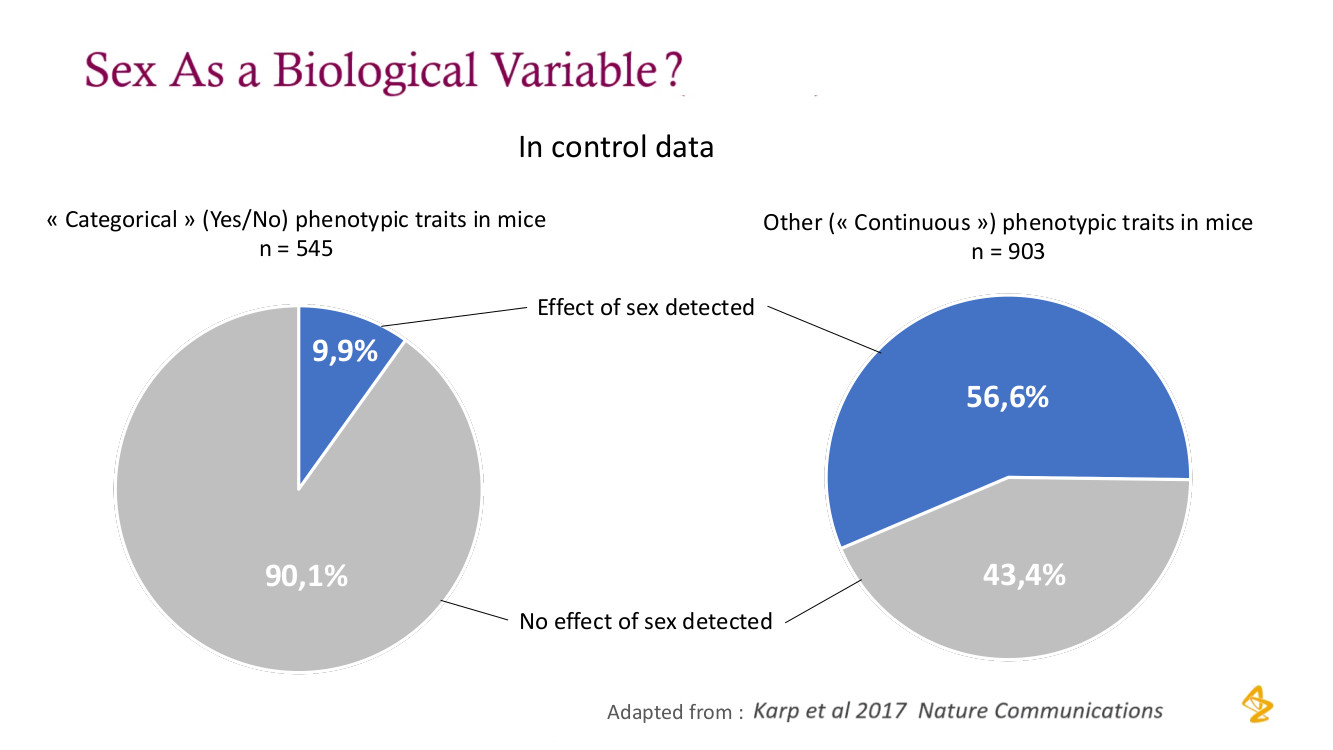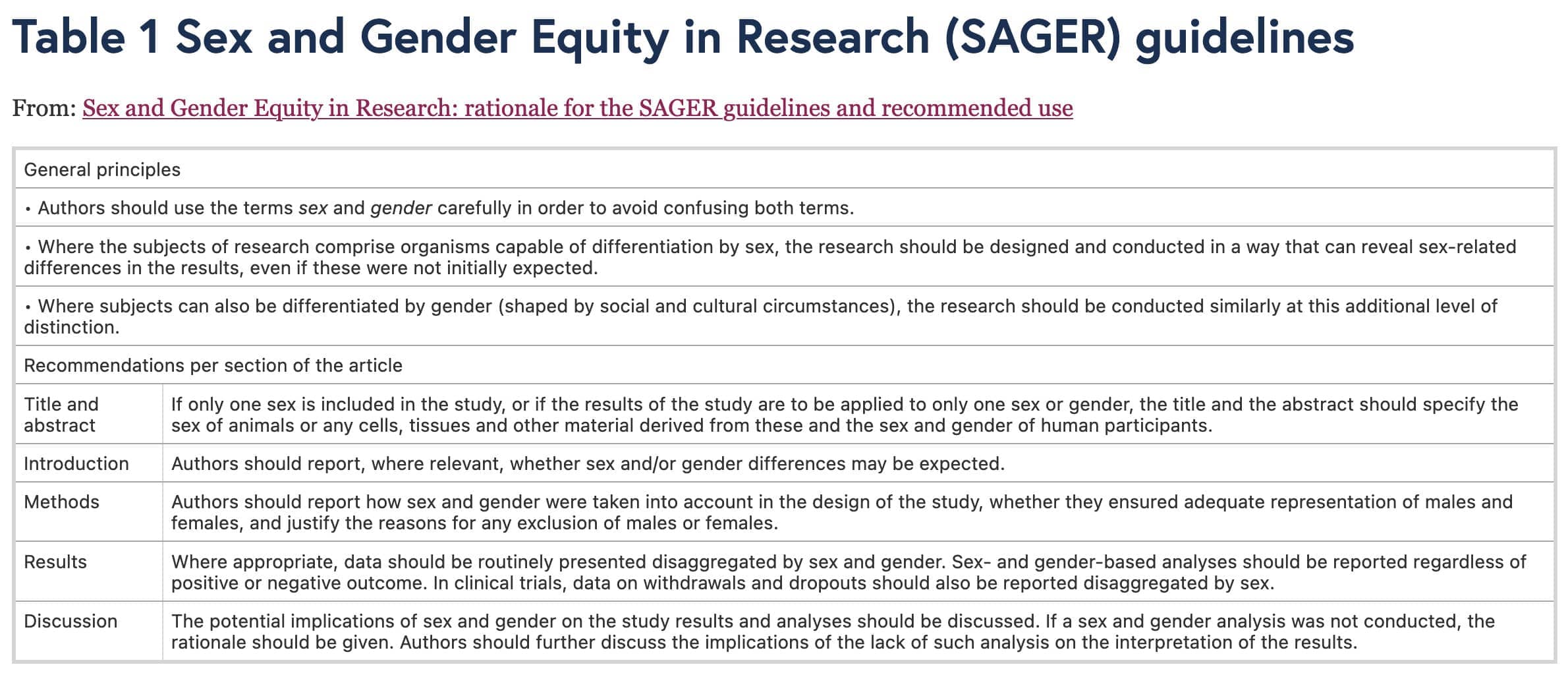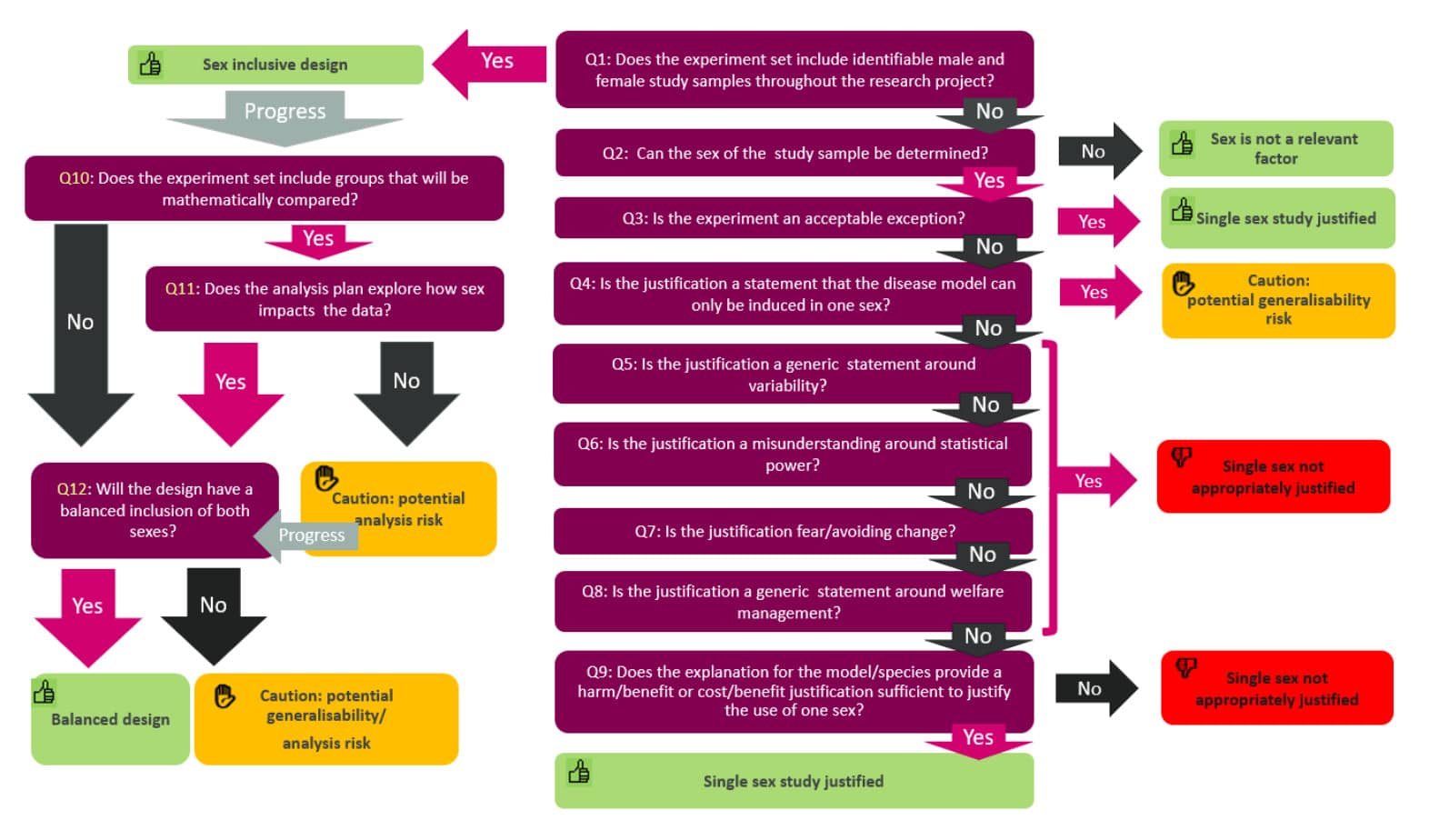
Every cell has a sex

Genes expressed off sex chromosomes have a broad-ranging impact on cells as diverse as neurons and renal cells. Sex is highly relevant also for in vitro studies ! (Holland & Bradbury, 2023)
The drive to improve the inclusion of animals of both sex during in vivo research and enhance sex representation in fundamental biology and drug development has spurred over the last decade. Dr. Natasha Karp, a Director of Statistics at AstraZeneca specialized in enhancing replicability, reproducibility, and generalizability within preclinical research, shared her expertise on sex-inclusive methodologies to improve the robustness of in vivo studies during a webinar “One sex fits all? The current thinking on sex inclusive in vivo research” organized by the FIN3R, on November, 14th.
Sex matters !
Defined as encompassing “the different biological and physiological characteristics of males and females (chromosomes, reproductive organs, hormones etc)”, the significance of sex in influencing biological traits cannot be overstated. It stands as a pivotal factor deserving consideration in all research endeavors.
Clinically, the impact of sex is undeniable, evident in variations in disease prevalence, symptomatology, and drug responses, as we all witnessed with the COVID-19 pandemics, where the prevalence was higher in females while males experienced increased morbidity and mortality. Although some attributions may stem from gender-related factors (socially constructed norms, roles, relationships etc), the fundamental differences in health outcomes are strongly indicative of inherent sex-determined biological distinctions.
Preclinical studies also provide compelling evidence. For instance, a comprehensive study analyzing research data from ten institutes, encompassing 55,000 mice of diverse genetic backgrounds and assessing around 250 traits, unveiled that a substantial portion of these phenotypes, in both wildtype and mutant subjects, exhibit sex-based influences (Karp et al., 2017). This finding holds profound implications for interpreting disease models in both animals and humans.
However, a disconcerting trend prevails: 22% of in vivo research cases and a staggering 75% of in vitro studies fail to report sex-related data (Yoon et al., 2014; Shah et al., 2014). Even in reported cases, while there has been noticeable improvement over the past decade – with single-sex studies going from 72% in 2009 to 51% in 2019 – a majority of preclinical studies continues to employ only one sex. Furthermore, among those studies incorporating both sexes, a minority delves into analyzing data by sex (42%), and when acknowledging a sex difference, statistical analyses are omitted in 33% of instances (Woitowich et al., 2020).
Overcoming the barrier of misconceptions
Several misconceptions set significant barriers to achieving sex-inclusive research practices. One prevalent belief is the unfounded assumption that females exhibit greater variability than males due to hormonal fluctuations, a notion debunked by studies in rats (Becker et al., 2016) and mice (Prendergast et al., 2014; Levy et al., 2023). Contrary to this belief, the inclusion of females in rodent studies does not escalate variability (Beery et al., 2018). However, in the pursuit of generalization and simplification, sex, along with other potential sources of variation, often gets overlooked during experimental design.
Another misconception arises from a literal interpretation of the “Reduction” principle, aiming to minimize animal usage per experiment. Yet, statistical simulations challenge this notion, demonstrating that inclusion of both sexes in in vivo studies does not inherently demand an increase in the overall sample size (Phillips et al., 2023). A contemporary interpretation of the 3Rs principle (Reduce, Refine, Replace) emphasizes the need for appropriately designed and analyzed animal experiments to ensure Robustness, Reproducibility, and meaningful contributions to scientific knowledge.
What is a sex inclusive research?
The goal of sex inclusive research is to estimate an effect that represents both sexes.
The idea is not to study sex differences but rather to estimate to what extent the effect is generalizable. Experiments must be adequately powered to detect the targeted effect across both sexes, enabling the identification of any potential disparities between them.
To this aim, where subject of research comprises organisms that can be differentiated by sex, several imperatives arise:
- Default inclusion of both sexes in studies involving animals, human tissues, and cells
- Incorporating sex-aware analyses during data interpretation
- Comprehensive reporting of raw data, detailing the sex of subjects
Non-inclusive research should be the exceptions and strongly justified, applicable only in scenarios where determining sex is unfeasible or unrelevant, in the case of in chemico studies, within sex-specific conditions (ex: breast cancer), or due to severe resource constraints.
The roadmap to better practices
Funding bodies wield significant influence in propelling the evolution of sex-inclusive research, with pioneers leading the change (White et al., 2021). For example, the European Commission mandates the incorporation of sex and gender analysis in research designs within the Horizon Europe Strategic Plan (2021-2024), unless justifiably irrelevant.
To bolster these efforts, recommendations have also been established for authors and reviewers in the perspective of publication, notably the SAGER guidelines by Heidari et al., 2016.

Additionally, a groundbreaking tool, the Sex Inclusive Research Framework (SIRF) in preprint stage, has emerged. Functioning as an educational resource, SIRF aids researchers in refining experimental design, dispelling misconceptions, and critically assessing the feasibility of sex inclusion. Presenting a decisional tree comprising twelve questions with detailed support, it categorizes evaluation outcomes into three levels: 'Appropriate Proposal' (green), 'Caution Required' (yellow) indicating potential risks in design or analysis, and 'Insufficient Justification for Single-Sex Study' (red).

SIRF will be soon proposed as an interactive and dynamic website interface, hosted by the Newcastle University. It will also generate a written report to help regulatory bodies and other evaluating committees assessing whether a research proposal is appropriate.
In summary, research underscores sex as a significant source of variation for both in vivo and in vitro research. However, sex bias is culturally embedded in our research pipelines, currently impacting the reporting, design, and analysis of experiments. As expectations toward science robustness are stiffening, we need to work out how to consider sex mindfully and effectively within each biological question.
